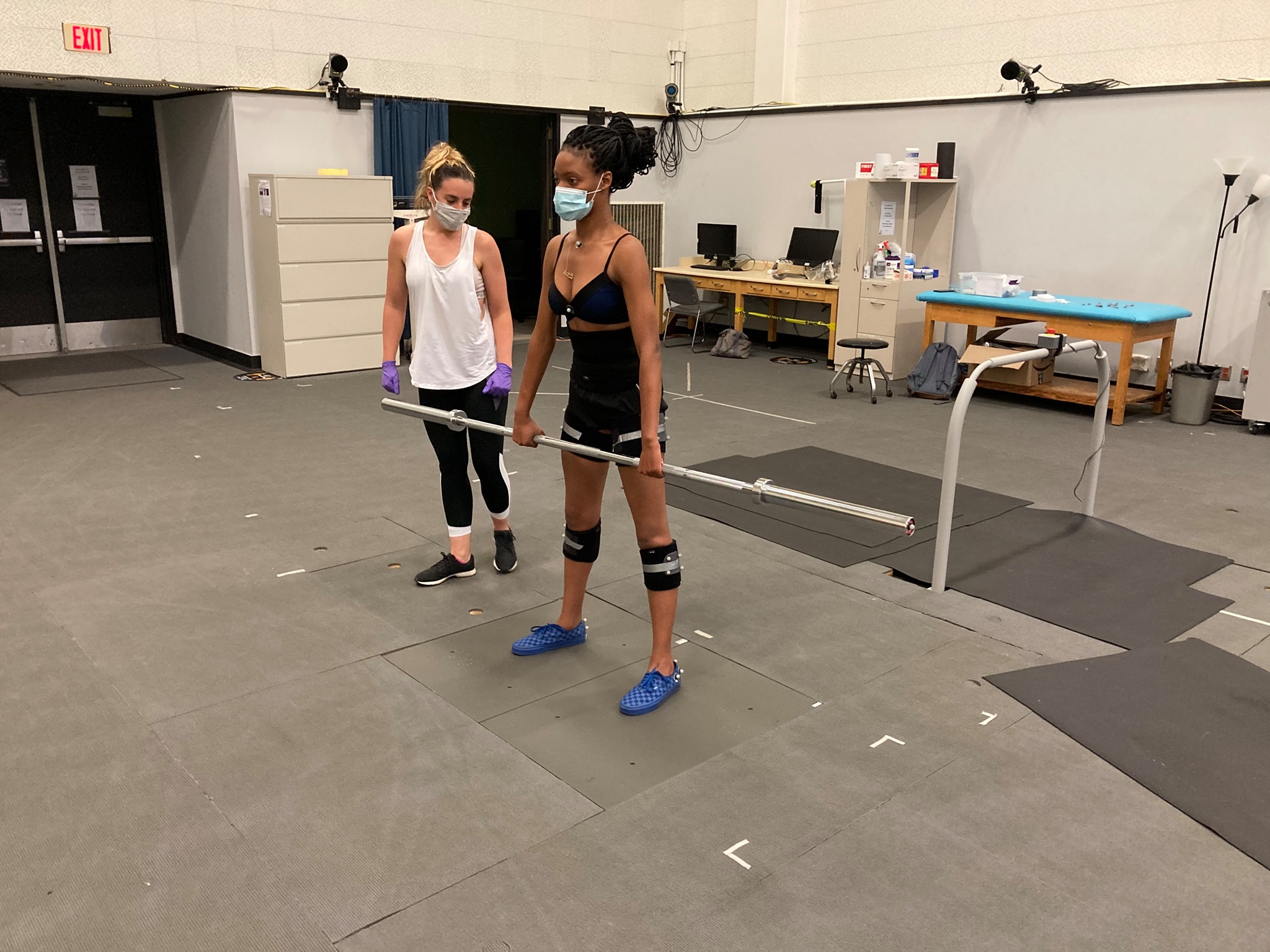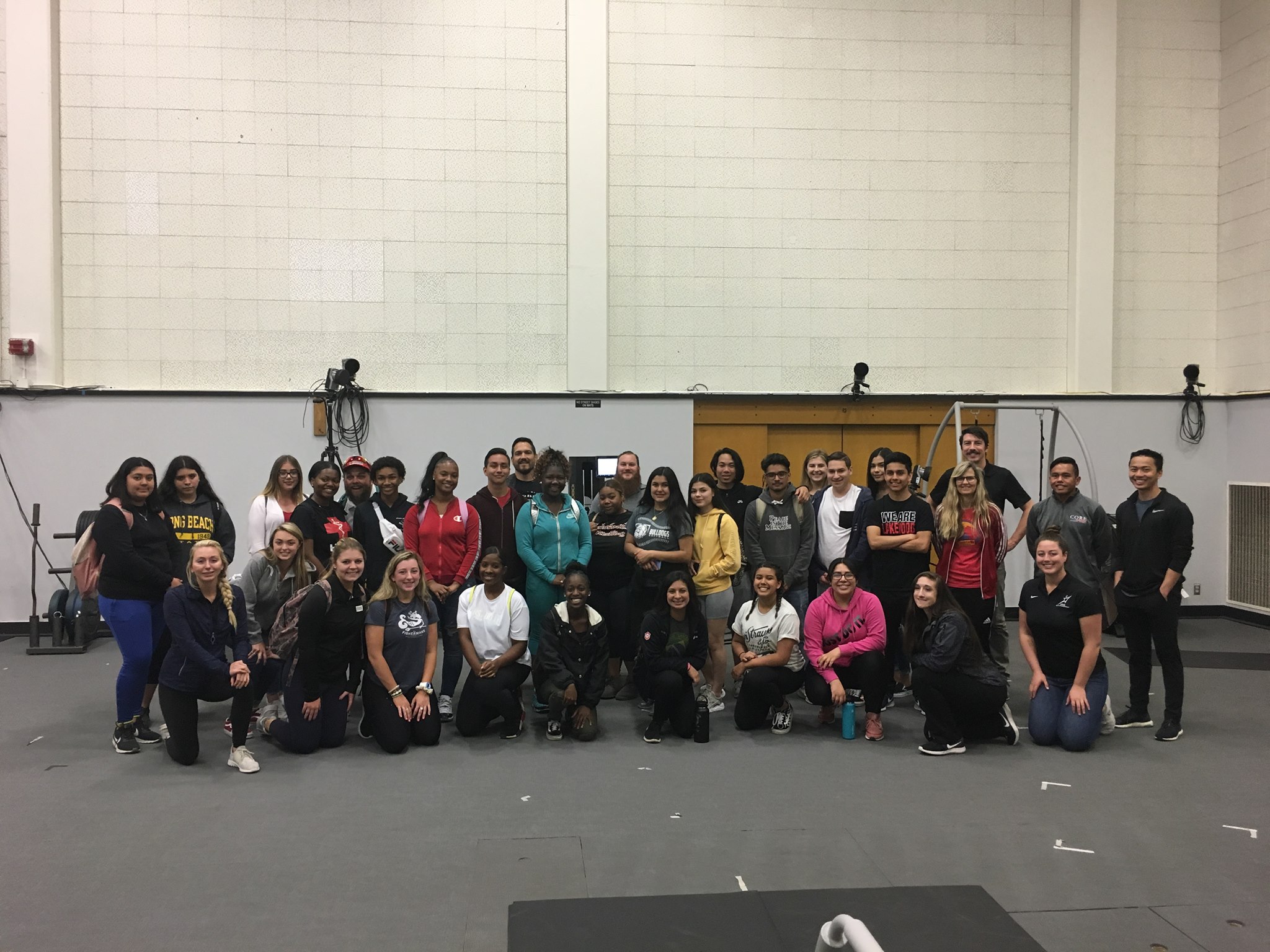CHHS Alumnus 'Coach Fany' Rising Star in Sports Medicine World
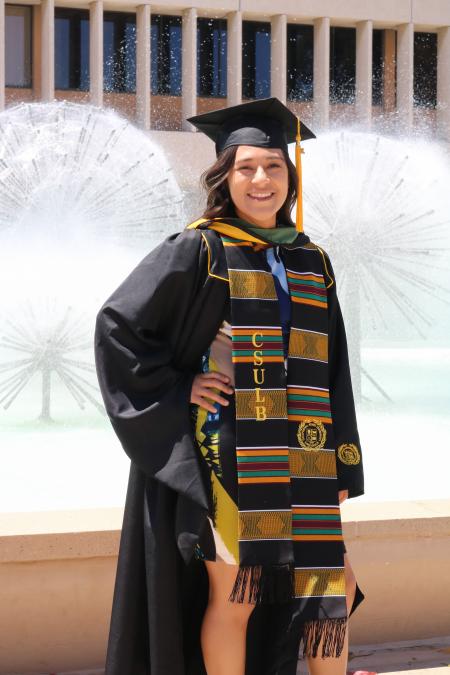
CSULB grad Fany Alvarado, M.S. Sports Medicine
CSULB grad Fany Alvarado is just one of the many rising stars coming out of the Movement Science Research Lab at CSULB. Alvarado is taking the sports medicine world by storm. She started her doctorate this summer at the University of Delaware, having recently graduated from CSULB -- obtaining her master’s degree in Sports Medicine with an emphasis in Biomechanics within the Kinesiology Department. Alvarado’s thesis project was about percussive therapy, and has recently been published in the International Journal of Exercise Science. Working with the company Therabody, along with her Kinesiology professor at Long Beach State, Dr. Kevin Valenzuela, Alvarado made some interesting findings, which will no doubt pave the way for more research into new exercise technology. In studying the use of a massage device known as a Theragun -- using it pre- and post-workout to track, among other performance benefits, its ability in helping prevent injury -- Alvarado took her research above and beyond. The College of Health and Human Services (CHHS) communications team caught up with both Fany Alvarado and Dr. Valenzuela to discuss the study and to learn about some of the latest research coming out of the Movement Science Lab at Long Beach State.
Q: What first made you want to study percussive therapy and how excited are you that your research has been published in the International Journal of Exercise Science?
Fany Alvarado: It’s exciting! It has been four years since the start of this project. It all started in 2019. I had already started learning about [percussive therapy relating to exercise and fitness recovery] in Dr. Valenzuela’s class. I decided to reach out to Therabody, which has become a leader in developing massage therapy devices. Dr. Valenzuela and I decided to post a video on social media of us explaining what my thesis was going to be about. We tagged the Therabody company in the post and it caught their attention. The CEO of the company saw it and wrote us directly, wanting to be a part of the study, so we ended up working with them on this project. They sent us the Theraguns to be able to conduct the research.
Dr. Kevin Valenzuela: Therabody took a walk through our Movement Science Lab and were very impressed. After that, they took us to their headquarters and showed us some techniques on how to use [the massage therapy devices]; they trained us in using the massage devices, and we incorporated all that training into this study. All that came from one social media post – that was our organic start to the whole thing. So we got the equipment and began work on this study.
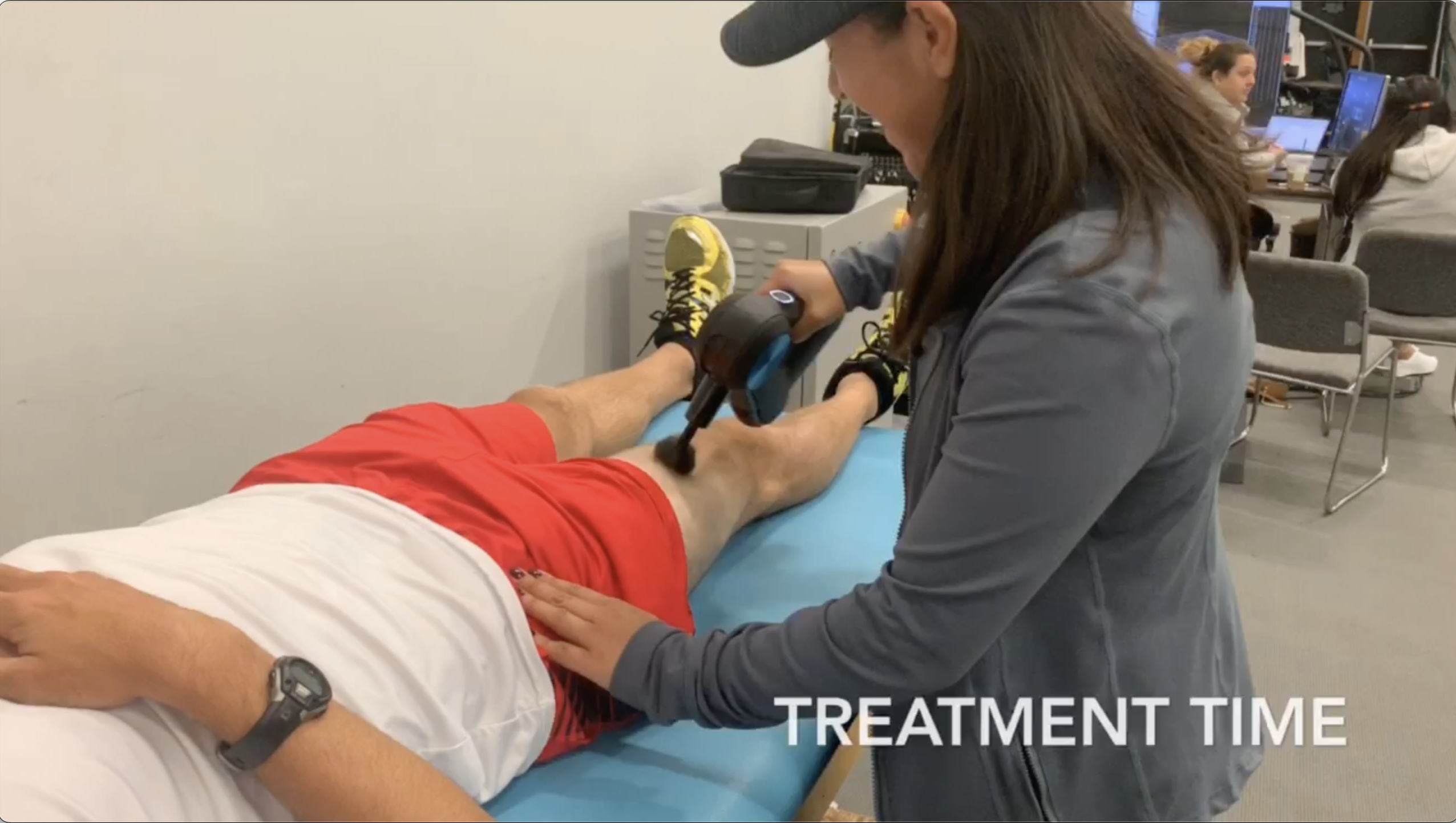
Fany Alvarado applying the massage treatment with the Theragun device - click for video
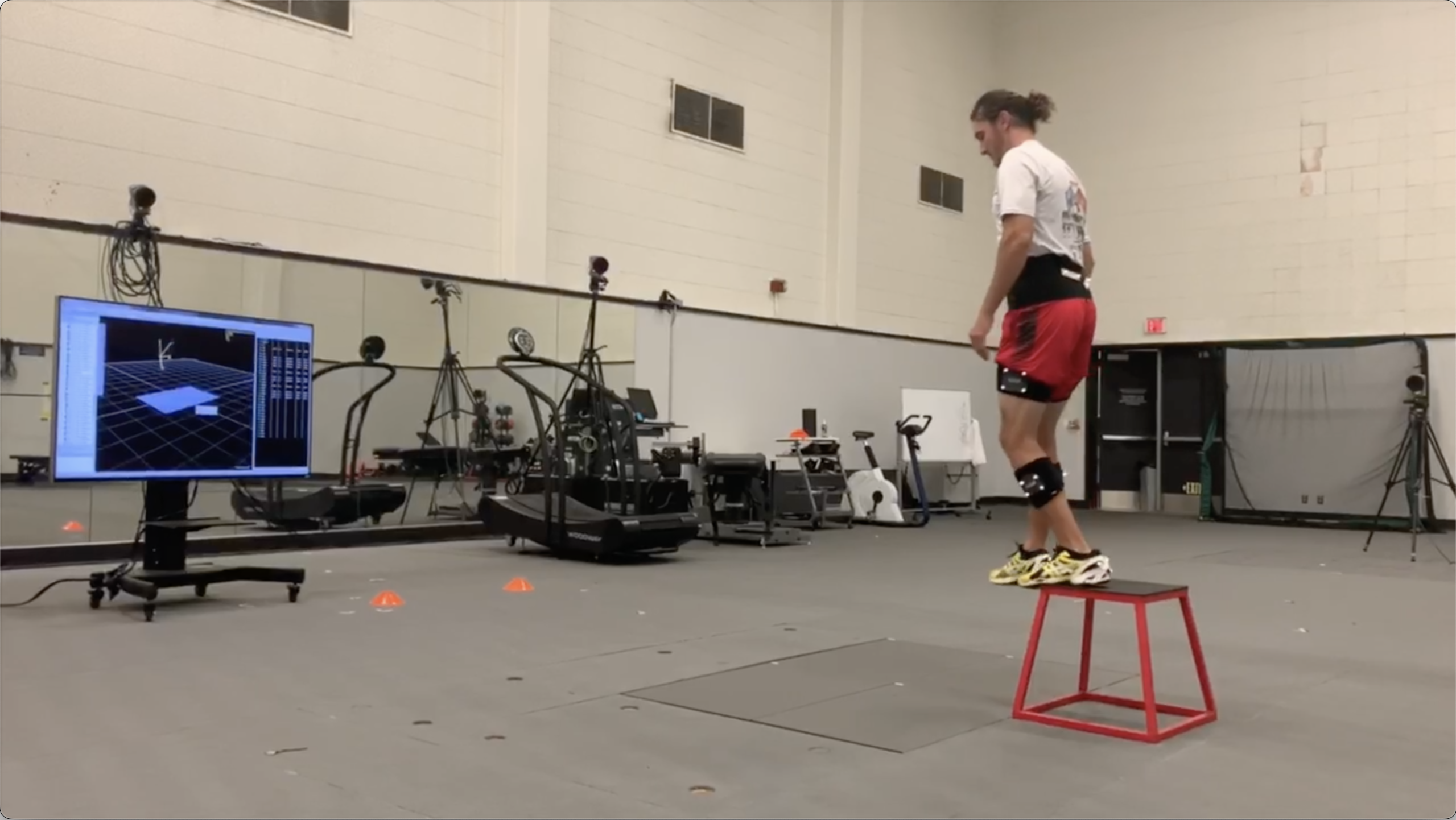
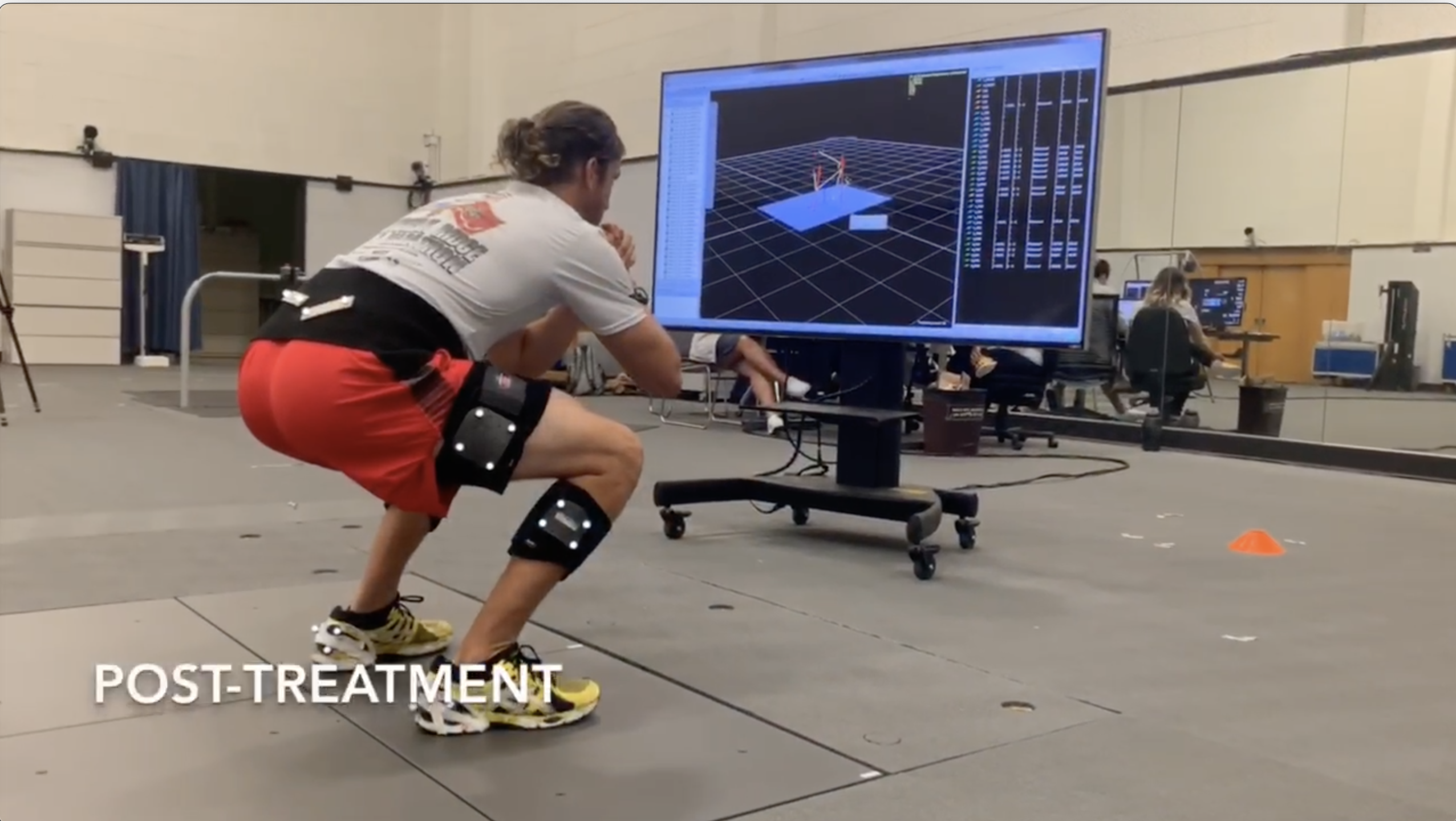
Q: So what all did the study entail?
Dr. Valenzuela: Basically, what our study entailed was two different visits. On the first visit, test patients would go through various exercises and have no treatment with the massage device. They would then come back for a second visit, perform movements, and receive massage treatment. We would go through the exact same protocol both times, and we would perform a range of motion measurements of the ankle, the knee and the hip. We would figure out how far [test patients] could extend and flex their joints, and then we would do some jumping trials. They would perform counter movement jumps and drop jumps. We studied the mechanical variables related to the movements – how much force they were producing, how high they were jumping, and how hard it was on the joints involved in the movements. We analyzed the treatment with the Theraguns versus the day without treatment.
Q: How does the massage treatment work, and what were your findings?
Dr. Valenzuela: You basically use these devices to loosen up the muscle tissue – it’s called myofascial release.
Fany Alvarado: I wanted to know if athletic performance would be changed with the use of percussive therapy. One of our findings was that there was an increase in passive range of motion. We saw those changes pre- and post-treatment. We found that using this [massage] device can be a benefit for increasing that range of motion, especially for people with a history of injury, or people who have tight muscles. With the increase of people using these types of devices, the overall finding in our study was that you can have some positive effects using these therapy tools, without it negatively impacting your performance in any way.
Dr. Valenzuela: Yes, we found increase in the range of motion, but no difference in jump performance, which isn’t a bad thing, because ultimately what it means is that if you have the ability to ‘stretch your rubber band’ farther apart without it getting close to the fracture points, it ultimately means you’re operating in a safer space. So that was a good finding for us and that study because it gives validity to that technology – to say, ‘this helps you’ – not necessarily to be able to run faster or jump higher, but it prevents you from being closer to that injury. Injuries occur at the end points, the breaking points. If we can push those boundaries farther apart, we’re all the better.
Q: So tell us how fun was it working on this project and getting to use the Movement Science Lab for your project?
Fany Alvarado: We have a pretty awesome Movement Science Lab at Long Beach State. It’s a big space, which gives us the ability to conduct great research and be immersed in cool and fun activities. One of the things, especially as Kinesiology majors, is that we’re trying to get the message out there and try to help people in their overall fitness life; they can come to us when they want to find out the best ways to move better, whether that be through lifting weights, or just movement in general. That messaging part of the lab is where I think Dr. Valenzuela is doing a really great job. He’s really engaged in research and is great about motivating people to be interested in research also, inviting them to come to either participate in a study or volunteer at the lab, or to just come check out the lab and see what exciting things are happening there.
Dr. Valenzuela: We have a lot of different studies going on at the moment, including a deadlift study, which looks at mechanical patterns of the exercise. All of our studies have the same general premise – the mechanical effects when you change certain parameters. These days, a lot of people are being misinformed about the best ways to do certain exercises. They see someone on Instagram with no scientific background teaching people improper ways of doing things. Here at the Movement Science Lab, we are 100-percent aimed at combatting the ‘bro-science’ myths, smashing the misinformation that is out there that is catching on, and helping people improve their overall fitness goals with good technique.
Q: Speaking of proper technique, Fany, you started a personal training business called Coach Fany while you were a student. What inspired you to do that?
Fany Alvarado: It was a side business I started, and it’s also what helped me through my master’s program here at Long Beach State. I’ve always really enjoyed movement in general. I decided to open up this personal training business, and it has also helped me with funding my schooling here at CSULB. It has been great, and now with virtual [classes] I can connect with people from all over the world. It’s part of the reason why I’m in research -- I want to be able to reach people from all over and help them with whatever I can in terms of their fitness and working out. I always tell my personal training clients, it’s about training for longevity. It’s better to progress in smaller steps and get to that level of consistency in your fitness that helps you later in life, so that when you’re older you can pick up your grandkids easily, go on walks without pain and basically, live in overall better life!
The Movement Science Lab and STAR (Sports Training And Research) facility is a 4,250 square foot (395 sq meters) space. The main laboratory measures 88 x 45 feet with a 30-foot high ceiling (26.8 x 13.6 x 9 m) and is equipped with multiple research tools to address questions in biomechanics, motor control, athletic training, and physical therapy. This laboratory is used for education and research as well as sports performance evaluations. Activities include track and field events, golf, running, jumping, landing, and cycling, as well as walking gait. The Movement Science Lab is equipped with an 18-camera Qualisys motion analysis system, 6 Bertec force plates (600x900mm), a Bertec instrumented treadmill, 16-channel BTS wireless EMG, Humac Norm isokinetic dynamometer, 1080Quantum Motion exercise system, Vertec jump system, and a full set of Olympic weights and barbells.
